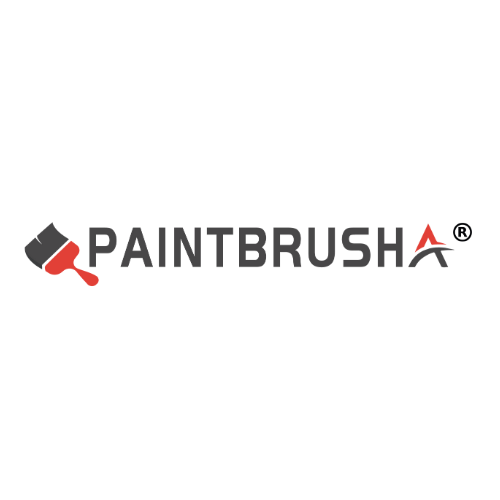Common problems during the cleaning process of oil painting brushes include:
The pigment is difficult to remove.
The cause of the problem: Oil paints dry slowly and have strong adhesion. Especially white paints, once they dry and stick to the bristles of the brush, they are very difficult to remove.
Solution:
Timely cleaning: Immediately wash the brush with warm water and soap after painting to prevent the paint from drying out.
Use professional cleaning agents: such as pen remover, paint remover or turpentine, which can dissolve oil paints more effectively.
Soaking and rubbing: Soak the brush in the cleaning agent for a few minutes, then gently rub the bristles to ensure that the paint at the root is also removed.
Damaged bristles:
The cause of the problem: Improper methods or tools were used during the cleaning process, such as pulling or rubbing the bristles forcefully, or using overly hot water for cleaning.
Solution:
Gentle handling: When cleaning, avoid pulling or repeatedly rubbing the bristles forcefully, especially with soft-bristled brushes. Instead, use a circular motion to gently scrub.
Use warm water: Avoid cleaning with water that is too hot to prevent damage to the bristles.
Choose the appropriate tools: Use a soft sponge, paper towel or special pen soap to clean. Avoid using hard brushes or steel wool balls, etc.
Deformation of bristles
The cause of the problem: The brush was not properly dried after cleaning, or it was left flat for a long time, causing the bristles to deform.
Solution:
Dry upside down: After cleaning, place the brush upside down in a well-ventilated area to dry, to prevent the bristles from deforming due to prolonged contact with water.
Use a drying rack: You can use a dedicated drying rack to dry the oil painting brushes and maintain the shape of the bristles.
Residue of cleaning agent
The cause of the problem: After cleaning, it was not thoroughly rinsed off, resulting in the cleaning agent remaining on the bristles and affecting the next use.
Solution:
Thorough rinse: After cleaning, rinse thoroughly with clean water to ensure no cleaning agent remains.
Multiple rinses: If a large amount of cleaning agent remains, you can rinse multiple times or use running clean water to rinse.
Split or shedding of bristles:
The cause of the problem: Poor quality of the brush, long-term use or improper cleaning, resulting in split bristles or shedding.
Solution:
Choose high-quality brushes: When purchasing, select oil painting brushes of good quality with tight bristles.
Regular replacement: Replace the bristles regularly based on usage conditions to avoid using brushes that are severely worn.
Gentle cleaning: When cleaning, avoid pulling or repeatedly rubbing the bristles to reduce the possibility of bristles splitting or shedding.
The brush is moldy or deteriorated.
The cause of the problem: After cleaning, the brush was not properly stored, resulting in it being in a damp environment for a long time and getting moldy or deteriorating.
Solution:
Proper storage: Store the cleaned and dried oil painting brushes in a dry and well-ventilated place, avoiding direct sunlight and damp environments.
Use a sealed bag: If the brush is not to be used for a long time, it can be stored in a sealed bag to prevent dust and moisture from entering.
To avoid the occurrence of the above problems, it is recommended to develop the habit of timely cleaning and proper storage when using oil brushes, choose reliable cleaning agents and maintenance products, and regularly check the condition of the brushes to promptly identify and address any issues.
